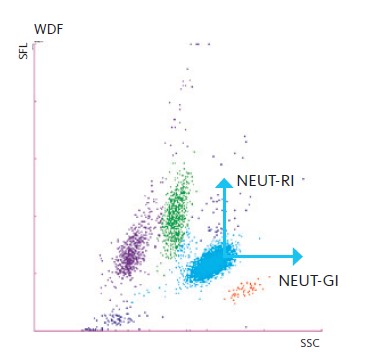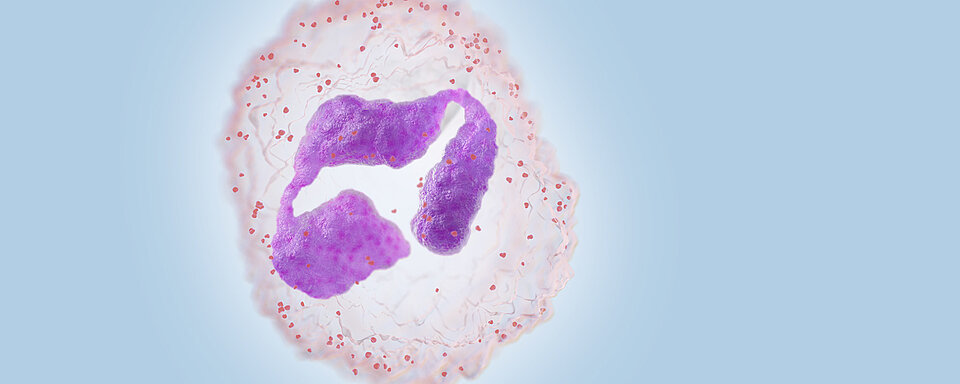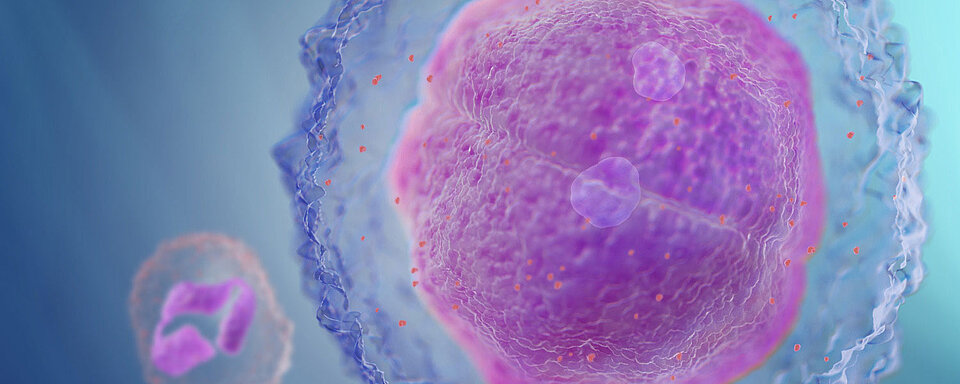Neutrophil activation: neutrophil reactivity intensity (NEUT-RI) and neutrophil granularity intensity (NEUT-GI)
Why measure neutrophil activation?
The understanding neutrophil granulocytes’ role in inflammation has changed essentially over recent years. The early view of the neutrophil playing only a passive role and simply responding to external signals has now been replaced by an appreciation that activated neutrophils can perform most of the functions of macrophages. It has now been recognised that activated neutrophils secrete a variety of pro-inflammatory cytokines and surface molecules (MHCII) in a manner that allows presentation of antigen to, and activation of, T cells.
Neutrophil activation is an indicator of early innate immune response hence both, NEUT-GI and NEUT-RI, will be increased in such a condition.
Sysmex’s haematological inflammation parameters support an early diagnosis so that targeted treatment can be started, changed or modified faster. Monitoring patients with inflammatory diseases and the success of their therapy helps to avoid the overuse of antibiotics.
Using Sysmex’s XN-Series analysers, the activation status of neutrophils (NEUT-GI and NEUT-RI) and lymphocytes (RE-LYMP, AS-LYMP) can now be quantitatively assessed. All parameters are part of the ‘Extended Inflammation Parameters’ package and are available after licence activation.
How are NEUT-RI and NEUT-GI measured?
In the XN-DIFF channel, cells are differentiated according to their fluorescence signal intensity (SFL), their size and their internal structure. Activated cells not only have a different membrane lipid composition but also greater activity in the cytoplasm as they actively produce e.g. cytokines. Consequently, the intensity of the fluorescence signal of activated cells is greater than the fluorescence signal of resting cells. The parameter NEUT-RI reflects this neutrophil reactivity intensity, representing their metabolic activity.
The 90-degree side scattered light of the XN-DIFF channel provides information about cell density or complexity, which represents the granularity of the cells. Therefore, if the complexity of neutrophils increases upon a change in functionality, e.g. by toxic granulation or vacuolisation, the position of the neutrophil cloud in the scattergram is also affected. The parameter NEUT-GI, expressed in the unit SI (scatter intensity), changes accordingly.


